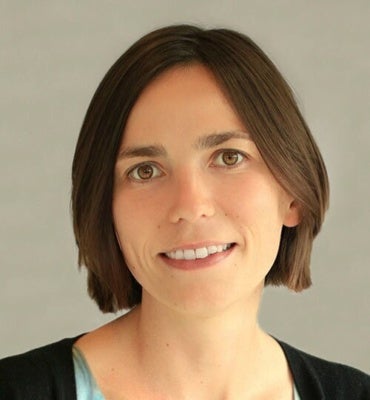Even before COVID-19 revealed and exacerbated economic inequalities in countries around the world, a consensus was building that business as usual could not continue. In August 2019, 181 CEOs from major companies represented in Business Roundtable signed a letter redefining the purpose of a corporation as creating value for all shareholders. Jaime Dimon, CEO of JP Morgan Chase & Co. and Chairman of Business Roundtable, remarked at the time: “The American dream is alive, but fraying.”
But how to measure companies’ value creation for stakeholders like employees and communities? The question may seem purely philosophical, but the pandemic, a global economic downturn, movements for racial justice, and environmental crises have underscored the need for measurable progress on pressing social challenges. So it may be of little surprise that Environmental, Social and Governance (ESG) metrics of corporate social impact are increasingly featured in the headlines.
But do ESG metrics, standardized for investors and the public to compare corporate impact, definitively answer the question of how to measure that impact? Diane-Laure Arjaliès, Professor at Ivey Business School at Western University, emphasizes that the debate is far from simple. We spoke with Arjaliès, who was awarded an Aspen Institute Ideas Worth Teaching Award for her course, “Assessing the Broader Impact of Business,” about the pros and cons of standardized ESG metrics, the prospects for decolonizing business, and much more.

ESG metrics are nothing new at this point, and interest from consumers, investors and employees has been increasing (particularly in this moment). Why haven’t we made more progress in the use of broader measures of impacts by businesses?
Businesses have made a lot of progress over the years. ESG metrics are now part of any annual report of any company almost everywhere in the world. It was not the case 15 years ago! Nowadays, many companies try to mitigate the negative effects of their practices or develop new ESG products that could be promising, business wise. The metrics in-use therefore tend to evaluate the efforts of companies to address social and environmental issues by focusing on the “inputs” rather than on the “outputs.”
Meanwhile, very few businesses actually aim at assessing the impacts of their activities on society more broadly. Which change has been obtained (or not) that would have not been achieved, without the company’s actions? That is what impact assessment aims to measure, and this is a relatively novel concern for companies. Consequently, we do not really have the metrics and methods in place to do so. Impact assessment requires more research and development in the years to come to be able to form a corpus of knowledge and practices that could be broadly used in the corporate world. Hence why I developed this course.
When social impact metrics are discussed in publications like The Economist, it often seems to be taken for granted that standardizing metrics is a good thing–yet your syllabus points to an open debate on standardized vs. tailored metrics. What are the dimensions of this debate, and what’s at stake?
For a very long time, it has been assumed that standardization was the way to go. In a nutshell, it was presumed that if companies could be compared with each other, investors would be able to select the best performers. Laggards would then be encouraged to improve their practices, which would eventually push forward the overall practices of the industry. A virtuous circle would be spurred thanks to the competitive mechanisms at stake in the market.
While this approach is certainly valuable; it also triggers significant problems, the main issue being that investors… no longer think! The standardization of ESG metrics has encouraged corporations to “apply” standards to optimize performance evaluations, rather than reflect on what social and environmental issues matter to their organizations and why. Unlike what is usually believed, there could therefore be a competitive advantage for a company – which has given a lot of reflection to their sustainable development strategy – to actually tailor their reporting systems to their specific choices and practices. This choice might help them attract investors willing to put more efforts into their due diligence and support the company’s strategic decisions, including during downturns. With Delphine Gibassier and Michelle Rodrigue, we actually wrote a case study featuring Danone on this very topic.
Your 2019 syllabus has a session dedicated to an Indigenous perspective on impact assessment. As 2020 has brought new attention to issues of systemic racism, what do you think greater inclusion of Indigenous and other alternative perspectives in business education might look like in the decade ahead?
The course has included Indigenous sessions since 2018 and is aiming at Indigenizing the whole course in the next iterations, in accordance with the current efforts undertaken by the Ivey Business School, Western University to decolonize its curriculum. This desire grew out of my current work with Indigenous communities in Southwestern Ontario, Canada. With partners in the region, we are actually working on the Deskan Ziibi conservation impact bond whose impact assessment will be fully Indigenized – i.e. will accommodate Indigenous worldviews. It is probably the first attempt of its kind worldwide. Indeed, so far, Indigenous worldviews have tended to be methodically discriminated rather than embraced, as a result of the Enlightenment and its appraisal of objectivity and rationality, particularly in the capitalist system.
I think business schools have no choice but engaging in a process of truth and reconciliation with Indigenous communities, but also with all the minorities they have systematically silenced since such institutions were created. Universities have participated to a great extent to the perpetuation of systematic racism and must now lead the path towards restoring fairness and equality. This is a necessary movement, not only for obvious moral and human reasons, but also to reflect the diversity of society and help address the grand challenges of our time.
For instance, Indigenous communities represent only 5% of the worldwide population, but are the stewards of 80% of the biodiversity of the planet. It is more than time to recognize the extent of this knowledge and include those perspectives in the university. The goal is not to still some bits of know-how, here and there, but instead to co-produce knowledge, in a respectful and equitable manner. At least, this is what we attempt to do in the impact assessment class and what is being searched by other colleagues all over the world, such as in the UK. While faculty members should obviously lead the change given their positions of power inside the universities, everybody could be an ally, first of all, our students, whose support for underrepresented groups, I hope, will continue to increase over the years.
As alumni from your course go into leadership positions across industries and sectors, what is the one lesson that you hope will stick with them throughout their careers?
For all my classes, the one lesson I want my students to take from is that they are free to do whatever they want with their lives. We might teach them models and give recommendations, but they are just cognitive devices and thoughts that embody some specific views of one society, at a given moment of time. For instance, it is often assumed that being successful means having a job with a lot of responsibilities and money. This is only one account of success; a social construct we tend to perpetuate as being the only form of success, particularly in business schools. But it is not an ultimate truth to pursue. It is one truth, among others. I want my students to be able to define what success means to them and build their own impact assessment compass of their lives – whatever this means to them.
![]()
Interested in more innovative insights for business education? Browse our complete collection of interviews with outstanding educators, and subscribe to our weekly Ideas Worth Teaching digest!

